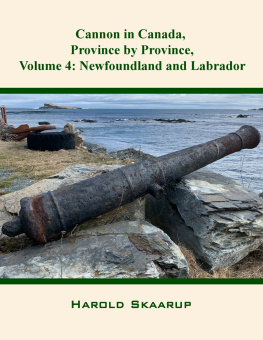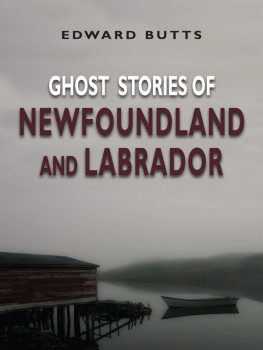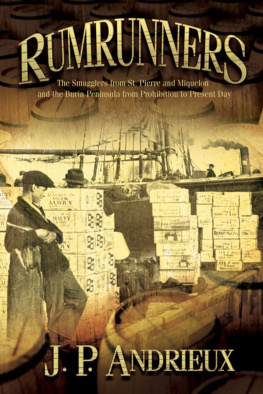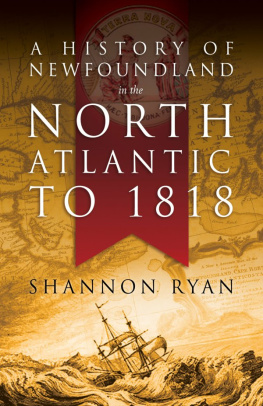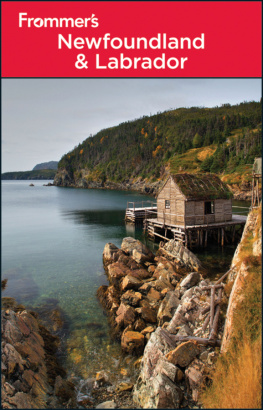The Newfoundland TONGUE
The Newfoundland TONGUE
NELLIE P. STROWBRIDGE

Library and Archives Canada Cataloguing in Publication
Strowbridge, Nellie P., 1947
The Newfoundland tongue / Nellie P. Strowbridge.
Includes bibliographical references.
ISBN 978-1-897317-23-5
1. English language--Dialects--Newfoundland and Labrador. 2. Newfoundland and Labrador--Social life and customs. 3. Folklore--Newfoundland and Labrador. I. Title.
PE3245.N4S78 2008 427'.9718 C2008-901744-7
2008 by Nellie P. Strowbridge
ALL RIGHTS RESERVED. No part of the work covered by the copyright hereon maybe reproduced or used in any form or by any meansgraphic, electronic or mechanicalwithout the written permission of the publisher. Any request for photocopying, recording, taping or information storage and retrieval systems of any part of this book shall be directed to Access Copyright, The Canadian Copyright Licensing Agency, One Yonge Street, Suite 800, Toronto, ON M5E 1E5. This applies to classroom use as well.
PRINTED IN CANADA
FLANKER PRESS
P.O. BOX 2522, STATION C
ST. JOHNS, NL A1C 6K1 CANADA
TOLL-FREE: 1-866-739-4420
WWW.FLANKERPRESS.COM
Cover Design: Adam Freake
13 12 11 10 09 3 4 5 6 7 8 9

We acknowledge the financial support of: the Government of Canada through the Book Publishing Industry Development Program (BPIDP); the Canada Council for the Arts which last year invested $20.1 million in writing and publishing throughout Canada; the Government of Newfoundland and Labrador, Department of Tourism, Culture and Recreation.
This collection is dedicated to Gertie (ne Smith) Strowbridge and the late Solomon Strowbridge, two wonderful people who, through my marriage to their son, became my second parents.
I also dedicate this book to Newfoundlanders and Labradorians everywhere who have kept the tongue of our forebears alive.
For he and I the vowel violate, and oft we drop the proper aspirate.
R. A. Parsons, Salute to Port de Grave, 1975
LIST OF CONTENTS
INTRODUCTION
I have wanted to write The Newfoundland Tongue ever since I returned to Newfoundland after being away from its land and sea for almost 10 years.
In 1966, Premier Joey Smallwood issued a collective invitation to Newfoundlanders living outside the province to participate in a Come Home Year. But for people with down-east fever, any year can be the time to come. For me, Come Home Year was in 1978. It was the year I came home to stay.
The Newfoundlander I had married in Toronto for better or worse got worse. His sleep and daytime dreaming were laced with delirium: an ailment I correctly diagnosed as Newf-stalgia. The only permanent cure was to have him take huge gulps of the islands sea-laced air. It being leap year, I made him a proposal: U-haul the furniture home and Ill tow the two offspring.
With a little revision our plan was put in motion.
A For Sale sign soon appeared in front of our townhouse and a truck was bought to transfer all our worldly goods. Immediately my other half began his convalescence.
To show that we had nothing against Ontario, we left all our money there. The house was sold for less than we paid for it three years before. We threw in two Chinese elm trees, three roses bushes, two noisy marijuana-scented neighbours... and it wasnt even Christmas
A neighbour who had heard about Newfoundlanders penchant for peculiar names asked if it wasnt dangerous living in a province with place names such as Pick Eyes and Blow Me Down.
You dont know half, I assured him. How would you like to live in Calves Nose, Snakes Bight, Dildo, or Joe Batts Arm? Weve even got a place called Paradise. You can go there and you dont have to die first.
The 365 bones in his herringbone suit practically went into convulsions.
One person who may have been happy to see us leave Ontario was the mailman. What horror he was put through on my account! One day I looked through the kitchen window to see him staggering up the walk holding a large khaki bag away from him as if he had lost the bend in his elbow. The smell of salt fish swirled around my nostrils as he his nose flared in disdain laid the bag at my feet and walked away. I marvelled that some postal worker had not destroyed this parcel of such a suspicious nature. The postmark must have explained that there was something fishy about its contents, indicating that the best way to handle this package was to have it delivered immediately. In the process of getting to me, the fish had developed a rosy colour, compliments of the spilled partridgeberries that were sent with it in a milk carton tied with green twine. The pink cod, when cooked, was as appetizing as the usual ivory-coloured variety. Goody parcels from home also contained peanut butter kisses and peppermint knobs. This kind of bait is still being used to lure a lot of Newfoundlands children to leave the 401 traffic jam and other far-from-Newfoundland highway jams for Mothers home-cooked berry jam.
The moment my feet landed on the Rock, I slipped into my Newfoundland skin and my comfortable zone. Words and expressions I had not noticed before I left home now leaped out at me, and I collected them like precious coins. Then the Dictionary of Newfoundland English was published and I bought it, delighted to find so many familiar words and expressions.
While I was growing up, there were things I couldnt see for looking, in a place where what is often lived is not noted. Living away gave my ear and eye the distance needed to give me a clearer perspective of the people and the place I belong to this very special place.
All in all, I grew up with the influence of other peoples accents, from Lears Cove to Pick Eyes (Piccos) to Blow Me Down to Ship Cove and Bareneed, with a little bit of St. Johns lingo and foreign tongues thrown in for good measure.
Across the sea, a short distance from Hibbs Cove, I spent happy summer days with Aunt Lizzie and Uncle John in Bishops Cove, walking through their garden of lilacs and berry bushes, on a bank that rose high above the ocean. People in Bishops Cove and neighbouring Island Cove asked: Ware ye frum? They used ye; we used youse.
When my fathers boat putt-putted across the bay from Hibbs Cove to bring me home from Bishops Cove, I climbed down the bank and plopped onto the boats deck. Words with a twist in sounds were ready to pop off my tongue. I came back to Pond Road trying to use ye, instead of youse, yez, and yiz. The cove children laughed to kill themselves.
When I was in Cobh, Ireland, awhile ago, I started up a long hill on a beautiful March morning to make the two-kilometre walk to the Old Church Cemetery and to the graves of the victims of the torpedoed Lusitania. Soon a man with a dog caught up with me. We talked as we went along. Suddenly he stopped and looked at me, puzzled. Ware you frum? Yer accent is all mixed up; tis not American nor Irish. I dont know wha-er tis. I carna tell head na tail ef et.
Thats the way it is now with many of us. Though the sounds of our Ireland, England, and Channel Islands ancestors are sometimes heavy on our tongues, we are no longer insulated from outside influences. We move around so much that our forebears way of speaking has been turned over and mingled, and is evolving so much that there may come a time when we will have no distinct dialect. We will speak the Canadian way.
Next page

